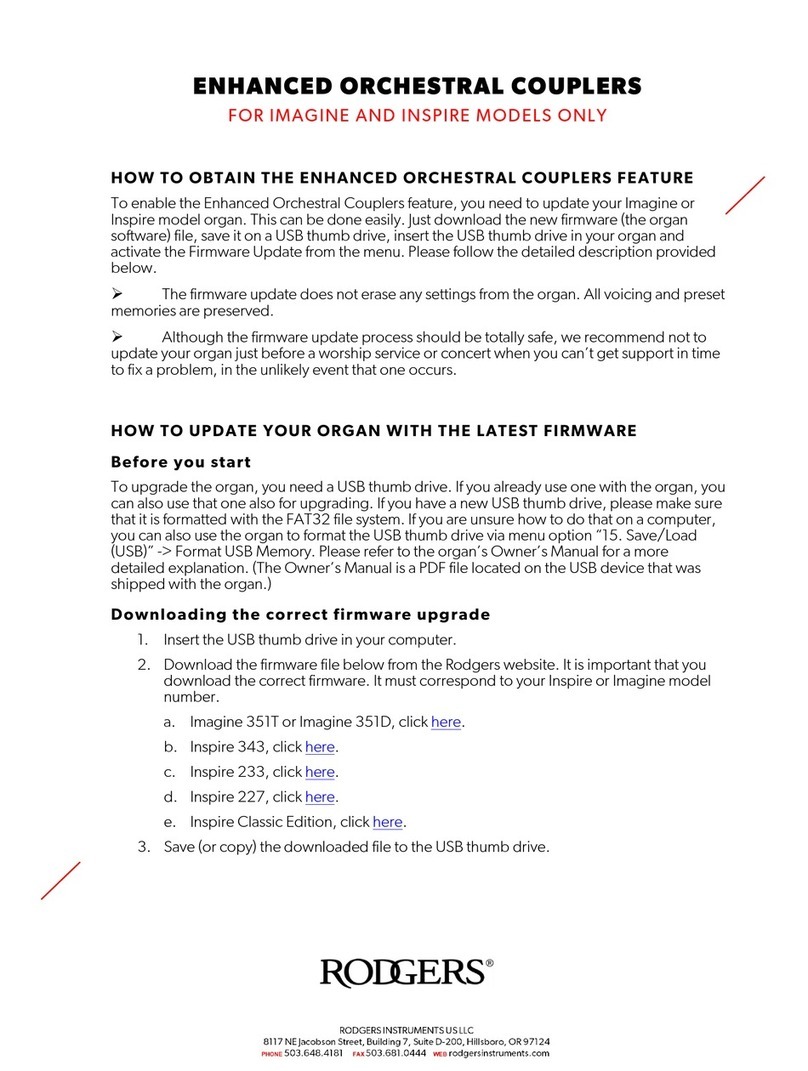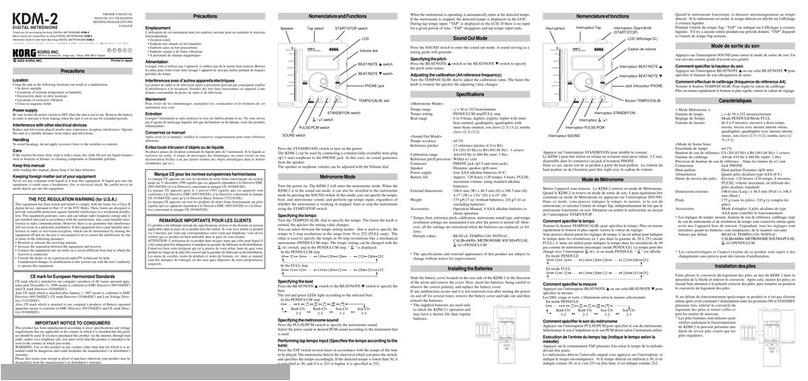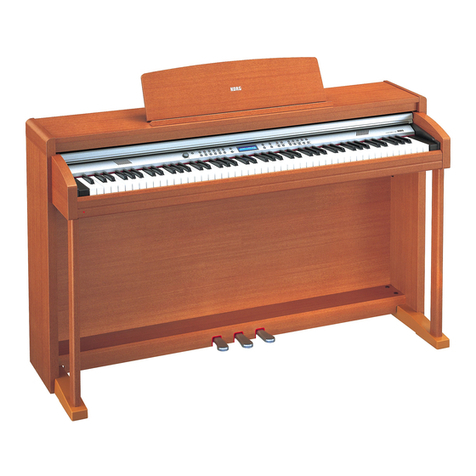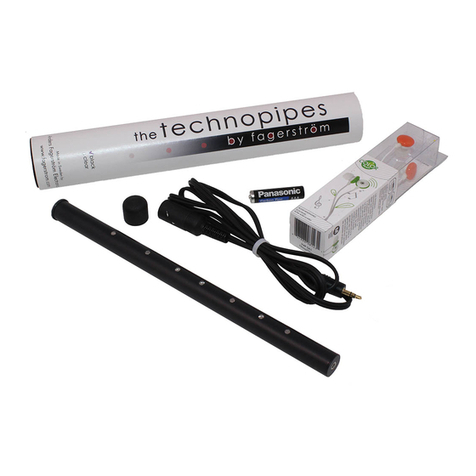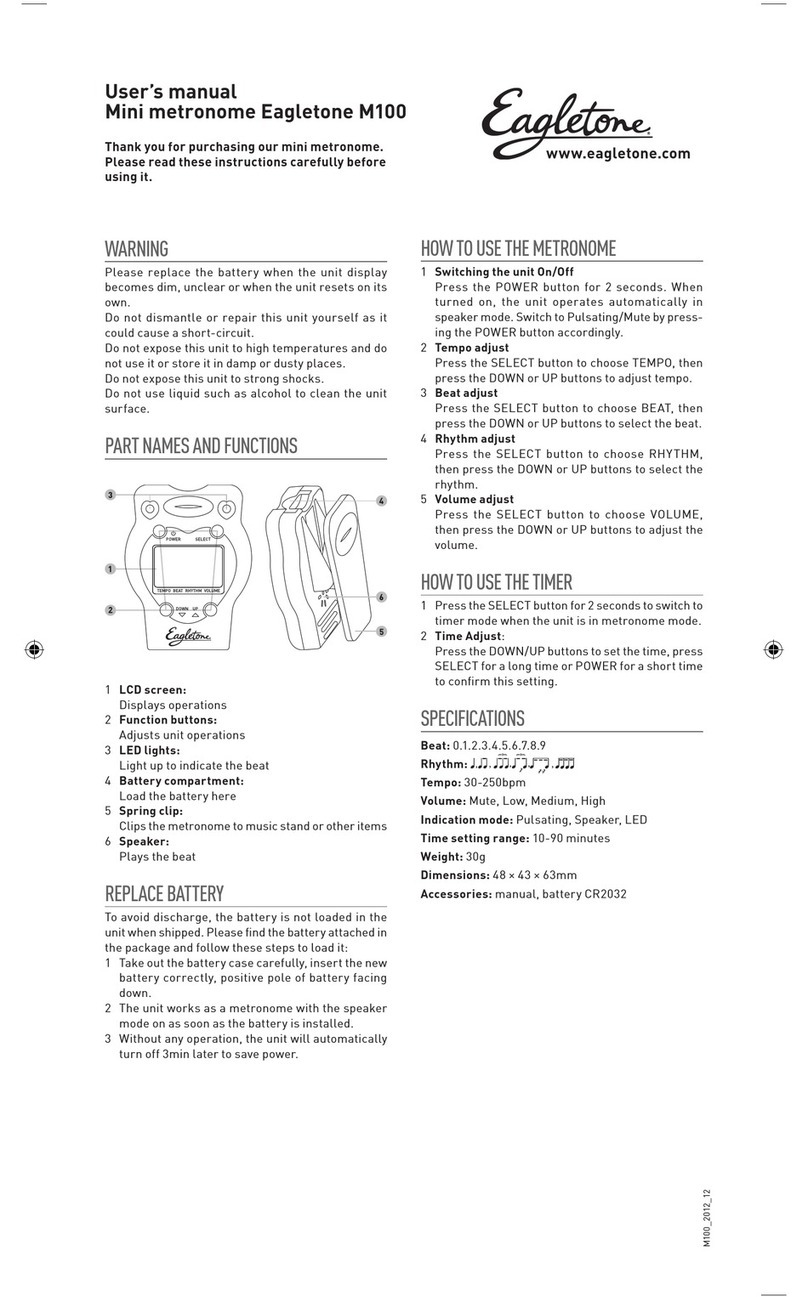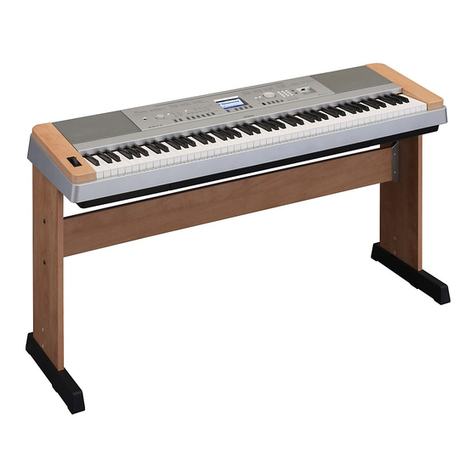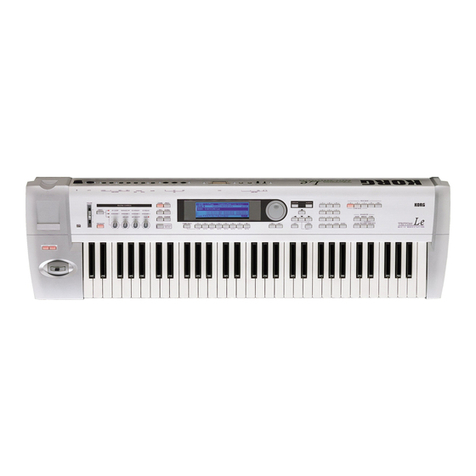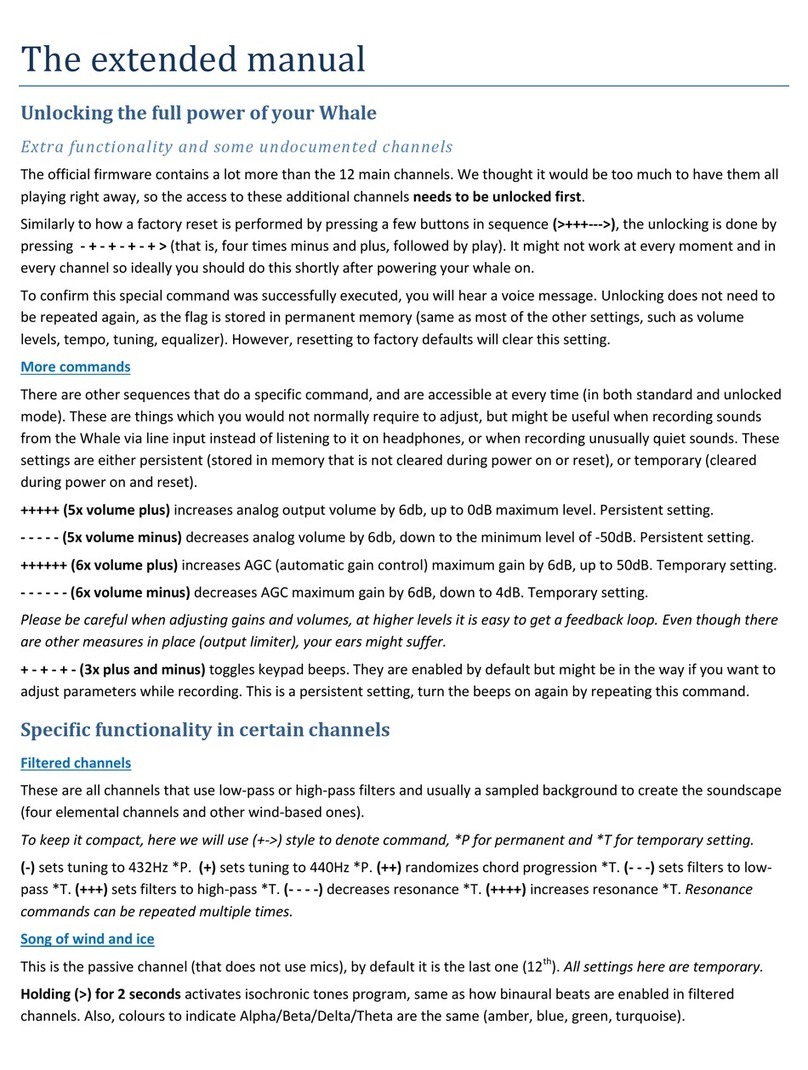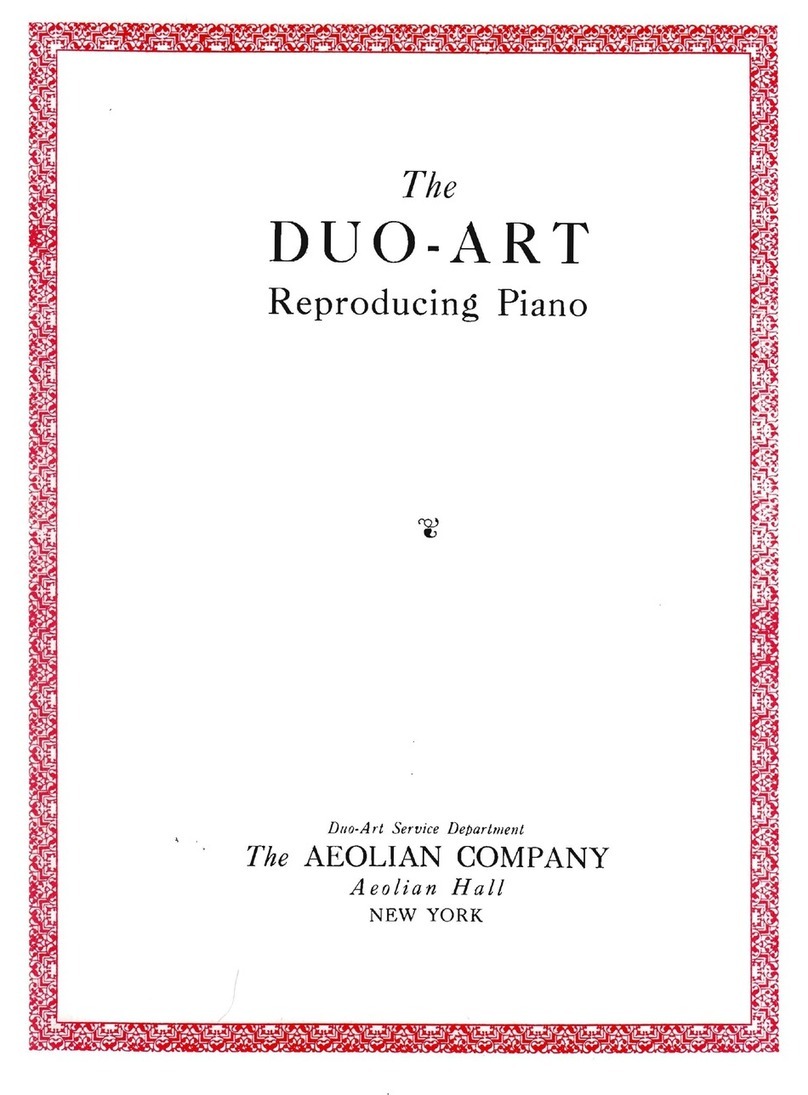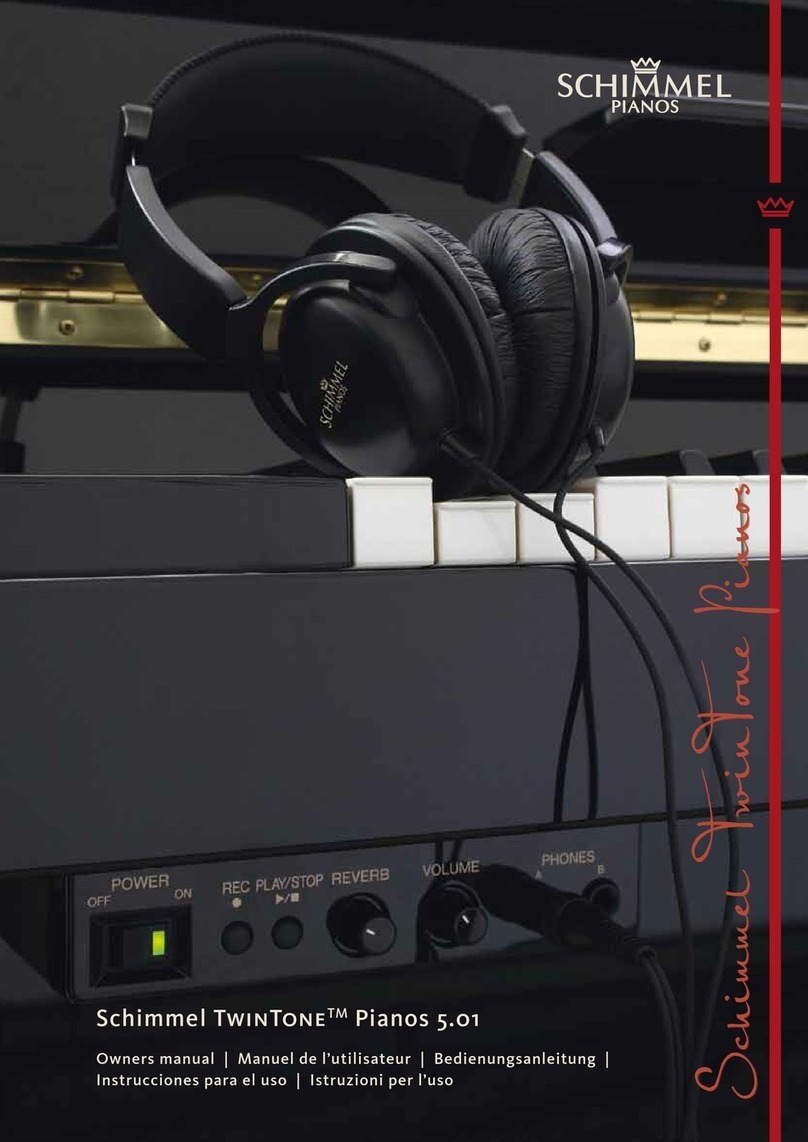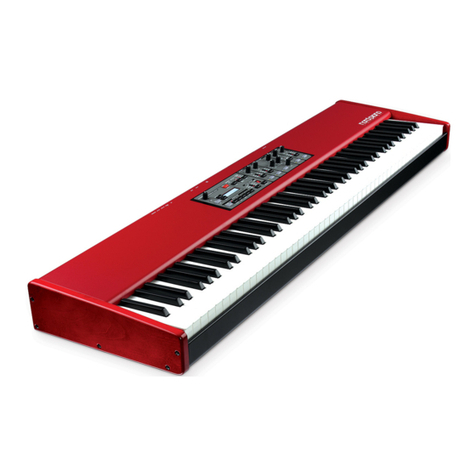Rogers 550 User manual

I .
MIDI
GS
FORMAT
COMPAnBLE
SOUND
SElECTION
~
ROILERS
INSTRUMENT
CORPORATION
The
sound
choice!
Owner's Manual
RODGER
S
INSTRUMENT
CORPORATION

RISK OF ELECTRIC SHOCK
DO
NOT
OPEN
A
lTENTION:
RISQUE
DE
CHOC
ELECTRIQUE
NE
PAS
OUVRIR
WARNING: PATENTS
TO
REDUCE THE RISK
OF
G.B. 1312161
FIRE OR ELECTRIC F.R.G.
2202658
SHOCK, DO NOT EXPOSE CANADIAN 951550
THIS APPLIANCE
TO
RAIN (1974)
OR
MOISTURE.
r-"~~~~~:~:h;~~:~;~~~~
RI~~~';"""'hwl
The lightning flash with arrowhead symbol, within
IELECTRICAL SHOCK'
~
an equilateral
triangl~,
is intended to alert the user
.
~
to
the presence of unlnsulated "dangerous voltage"
~
~
within the product's enclosure that may be of
DO NOT REMOVE COVER OR BACK.
~
sufficient magnitude to constitute arisk of electrical
~
shock to persons.
~
NO USER-SERVICEABLE PARTS INSIDE.
~
The exclamation point within the equilateral triangle
~
is
intended to alert the
user
to the presence of
IREFER SERVICING TO QUALIFIED
~
important operating and maintenance (servicing)
~
SERVICE PERSONNEL
~
instructions
in
the literature accompanying the
L_"."",»"_"",
..
.,.w.",.v."'''''h,,~,,~,wh,wm,,,w,w''''h'''~'~'~~~"~''h~'~~W'W'~'hW
...•
Jproduct.
NOTICE TO USERS
Information
in
this document is subject to change without notice.
No
part of this manual may be translated into any language, stored
in
a
retrieval system, reproduced or transmitted
in
any form or by any
means, electronic or mechanical, including photocopying and recording,
for any purpose without the express written permission of Rodgers
Instrument Corporation.
RODGERS INSTRUMENT CORPORATION
1300 N.E. 25TH AVENUE
HILLSBORO, OREGON 97124
(503) 648-4181
RODGERS
CANADA
5480 Parkwood
Way
Richmond, B.C. V6V 2M4
(604) 270-6332
<l:)
Copyright
1992,
Rodgers
InSirumenl
Corporation, a
membor
of
the
Roland
Group.
All
righls
reserved.
Prinled
In
Ihe
United States
01
America.
RodgerS<!l>
Classic Organs'" ,
RodgerS<!l>
Classic
Keyboardsr~
and
Rodgers®
DVM'~
(Dlglml
Voice
Module)
ero
lrademarks
01
Rodgers
Instrumenl Corporalion.

SAFETY INSTRUCTIONS
INSTRUCTIONS PERTAINING TO ARISK
OF
FIRE,
ELECTRIC SHOCK OR INJURY TO
PERSONS
IMPORTANT SAFETY INSTRUCTIONS
WARNING: When using this instrument, always follow basic precautions, including the following:
1.
Read all the instructions before using, adjusting or 10. Unplug the power cord of the instrument from the
repairing this instrument. power source when leftunattended for along period
of
time.
2. To reduce the risk
of
injury, supervise children closely
when they are around the instrument. 11. Do not walk on or place objects on top
of
the power
cord.
3. Use this instrument only in the manner recommended
by Rodgers Instrument Corporation. 12. Do not pull the cord to unplug. Hold the plug when
unplugging from the power source.
4. Do not use this instrument nearwater, for example,
near
aswimming pool
or
adamp/wet room. 13. When setting up with other instruments
or
peripherals,
follow the procedures in accordance with Rodgers'
5. Use of this instrument, either alone
or
in combination owner's manual.
with an amplifier
and
headphones or speakers,
may
be
capable
of
producing sound levels that could cause 14. Take care that objects do not fall
or
liquids spill into the
permanent hearing loss. DO NOToperate for along instrument.
period
of
time
at
ahigh volume level or at alevel that is
uncomfortable. II you experience
any
hearing loss
or
15. Service the instrument with qualified service personnel
ringing in the ears, you should consult an aUdiologist. when:
6. Locate the instrument so its position does notinterfere a. The power cord
or
plug has been damaged.
with its proper ventilation. b. Objects have fallen or liqUid has spilled into the
7. Locate the instrument
away
from heat sources such
as
instrument.
radiators, heatregisters
or
other products that radiate
heat
directly onto the instrument.
c.
The instrument has been exposed to rain
or
other
weather damage.
8. Protect the instrument from dust as much as possible. d. The instrument does not appear
to
operate
9. Connect the instrument
to
apower source only of the normally
or
exhibits amarked change in
type described in the operating instructions or as performance.
marked on the instrument. Do NOTattempt
to
defeat
the grounding connection of the three-prong
e.
The instrument has been dropped or the
attachmentplug. This is asafety feature.
If
you are enclosure has been damaged.
unable to insert the plug into the outlet, contact an
electrician to replace your obsolete outlet. Do NOT 16. Do not attempt to service the instrument beyond that
defeat the safety purpose of the plug. described in the owner's manual. Refer all other
servicing to qualified technical service personnel.
WARNING: THIS INSTRUMENT MUST BE EARTH GROUNDED.
You must GROUND instruments equipped with aTYPE AC, 3
WIRE
GROUND PLUG.
SAVE THESE INSTRUCTIONS 1

FCC NOTICE
Radio
and
Television
Interference
The Rodgers Classic Keyboard
uses
and
generates
small
amounts
of
radio-
frequency
(RF)
energy.
The
instrument
complies
with
the
limits
set
for
Class
B
digital devices. FCC Rules,
Part
15,
Subpart
Bdefine
the
limits for
radio
and
television interference
in
a
residential
installation.
Follow
the
installation
and
the
use
instructions
in
this
manual,
or
the
instrument
could potentially
cause
interference
with
some
radio
or
television reception.
In
the
unlikely event
this
occurs,
we
encourage
the
user
to try
the
following
corrective
measures:
./
Turn
the
instrument
OFF to
see
if
it
is
the
actual
source
of
the
interference.
Disconnect
the
peripheral
devices
and
their
input/output
cables
one
at
atime. If
the
interference
stops,
it
is
caused
by
the
peripheral
device
or
its
I/O
cable.
Try
coiling
and
uncoiling
the
instrument's
power
cord
in
different ways.
Connect
the
instrument's
power cord to a
power
outlet
on
a
different circuit.
Move
the
instrument
farther
away
from
the
radio
or
television
receiver.
Turn
the
radio
or
television receiver
until
the
interference
stops.
Connect
the
radio
or
television receiver to adifferent power
circuit.
Reorient
or
move
the
receiver
antenna
farther
away
from
the
instrument.
Consider
installing arooftop
antenna
with
coaxial
cable
lead-in
between
the
antenna
and
receiver.
Consult
the
nearest
Rodgers Classic Keyboards
dealer
for
more
information if
the
above corrective
measures
don't
remove
the
interference.
11

Table
of
Contents
CAUTIONS and Notice
to
Users
Safety Instructions
FCC Notice
Table
of
Contents
Overview
of
the 550, 580 and 685
Brief
Tour
Turn Onffurn Off
Divisions
Selecting or Retiring aStop
Combination Action
Couplers
Tremulants
Expression Pedal (550)
Expression Pedal (550 and 685)
GreatIPedal Unenclosed (550)
Great
to
Swell Expression Coupler (580 and 685)
Bass Coupler
Melody Coupler
Tuning Knob
Transposer Knob
User I/O Panel
MIDI IN/OUTffHRU
Auxiliary Inputs (Left and Right)
Auxiliary Input Level
Auxiliary Outputs (Left and Right)
Reverb Level
Headphone Volume and Jack
inside cover
i
ii
111
page 1
page 2
page 2
page 2
page 2
page 3
page 4
page 4
page 5
page 5
page 5
page 5
page 6
page 7
page 8
page 8
page 8
page 8
page 8
page 8
page 9
page 9
page 9
111

iv
MIDI
(Musical
Instrument
Digital
Interface)
Sending aProgram Change
Velocity Information
Channel Reassignment
Octave Transpose
Enabling/Disabling MIDI Master Channels
Saving aCombination Memory
Receiving aProgram Change
Local On/Off
Returning to Default Settings
Common MIDI Connections
550 Specifications
580
and
685 Specifications
Suggested Registrations
Care
and
Maintenance
MIDI
Implementation
page 10
page 10
page 10
page
11
page
11
page
11
page
13
page
13
page 14
page 14
page
15
page 16
page
17
page
18
page
31
page 32

_II
OVERVIEW
OF
THE 550, 580 and 685 [
Thank you for choosing the Rodgers 550, 580 or 685. These instruments are high quality
church organs in both sound and construction, designed to provide years
of
reliable service.
Theseinstrumentsaretwo-manualclassicalorgansthatincorporatean eclecticspecification
and authentic pipe organ sounds. Inaddition to abuilt-in two-channel stereo audio system, the
550 and 580 have provisions for additional amplification and speakers. The 685 has afour-
channel (stereo x2) audio system with external speakers.
The550, 580and 685 utilizelightedtilttabstopcontrols. Traditional couplers areincluded,
as well as an adjustable combination action (pistons) with two memories.
These instruments are completely voiced and tuned for optimum tonal authenticity. A
Rodgers factory-trained technician can provide additional voicing and finishing as required.
The 550, 580 and 685 offer full MIDI (Musical Instrument Digital Interface) capability,
allowing the organist to control other MIDI devices (keyboards, sequencers, rhythm units,
sound modules, etc.). MIDI allows the performer full recording and playback capabilities.
Rodgers organs are built in Hillsboro, Oregon, USA. Through the most advanced
technology available, the Rodgers Instrument Corporation, amember
of
the Roland Group,
delivers proven reliability, design innovation and atradition
of
musical excellence, marking
our position as
The SoundChoice!
v
I

Il
l-liiiiiii
l
BRiiiiiiiiIEF
TiiiiiiiiOUR~11
To
get started, here is abrieftour
of
the basic operations
of
Rodgers 550, 580 and 685:
TURN ON/TURN OFF
To
turn the organ on, press the power rocker switch at the top (1). In approximately 5seconds, the
the SET and GENERAL CANCELpistons will light, indicating the poweris on and the organ is ready
to play. Toturn the poweroff, press the powerrocker switch
at
the bottom (0). Thepowerto the organ
is off.
DIVISIONS
The following groupings
of
stops (tilt tabs) affect the indicated manuals (keyboards)
or'pedalboafd:
,
COUPLERS 0
85
ONLY.
AT
ERALS
ELL
I I GRE
DAL !IGEN
-L
!
./
I-
...........
Z
II
II
II
1I11111111111111111111111
III
II
l~
.
••
e
••
'&'&
(!]
,,- ...... .
.......lle
GT.
&PEDAL SWELL EXPRESSION
d
(580/685)
EXPRESSION
~
(Or
General
(580/685)
III
II
I"
'I
Exprssslon-5501
I-
{6
~aOl
Ilj
~~C~e-;
~
lj
~
\
~
~
L
t1
\:..J
"'=-
~
PE
SW
PEDA
SELECTING OR RETIRING ASTOP
Press the bottom
of
the desired tilt tab to turn
it
on. It will light, indicating it is on. Press the top
of
the tilt tab to tum off the stop. The light will go off, indicating the stop is off.
2

COMBINATION ACTION
(Pistons)
The 550, 580 and 685 feature acombination action easily changed by the organist from the
console. The organist can pre-select favorite registrations and make rapid changes in tone color
using this advanced system. The pistons will light when pressed.
The 550 combination action includes five general pistons, a
SET
piston and aGENERAL CANCEL
piston. The 580 and 685 combination action includes ten general pistons, aSET piston and a
GENERAL CANCEL piston. All three instruments include adual memory combination action
(M2). The 685 also includes ten toe studs which duplicate the ten general pistons.
.----~I
~I-=-=-=-=-=-I=-=-=-=-=-~I-='
===t
l
----...
/'
,"
•
vMEMORY 2
\
~
/
~eeeG
\/
f?
VI
\
'SET
I
GENERAL
PISTONS
1-5
(ALL
INSTRUMENTS)
dENERAL
PISTONS
6-10
(580/685)
'GENERAL
CANCEL
GENERAL
PISTONS
~
-5
(T~
STUDS)
(685
ONLY)
~
~
OJ
f5j
fjj
III
II
rill
illJ~
GENERAL
PISTONS
j
6-10
<TOE
STUDS)
(685
ONLY)
c;::;e
c~tl~
~
HOW
TO
SET
THE
PISTONS:
1.
Select the stops desired.
2. Push the
SE~
piston and hold.
3. While holding the SETpiston, push the desired piston, and then release both
pistons simultaneously.
(Note: Selecting
M2
before steps 1-3 will activate asecond memory, thereby doubling the
number
of
combinations available.)
3

COUPLERS
n.
Couplers enable stops
of
one division to be played on
another keyboard or pedalboard. The couplers on the "C" series organs are
GREAT
TO
PEDAL. SWELL TO PEDAL and SWELL
TO
GREAT.
\
...
Notes heard
1: with Swell
To
Great
coupler added
Keys played
and heard.
TREMULANTS
Tremulants create changes in pitch (sharp and flat) or amplitude (volume). The use
of
tremulants
adds warmth to solo orsmall ensemble combinations and is useful in gospel and romantic music.
The 550. 580 and 685 have aMAIN TREMULANT that affects all manual voices. The SWELL
FLUTE TREMULANTFULL affects all the flute voices on the Swell manual. It is adeeper and
faster tremulant than the other tremulant. Each independent tremulant is adjustable for both speed
and depth.
It
is recommended that these adjustments be made by Authorized Personnel Only.
4

EXPRESSION PEDAL
(550)
This pedal controls the overall volume
of
the entire organ. This pedal is used to give variety
of
expression to the music played. Pressing the pedal forward increases the volume; drawing back
decreases the volume.
EXPRESSION PEDALS
(580 AND 685)
The
pedal
on
the right controls the overall volume
of
the Swell division.
The
pedal
on
the left
controls the overall volume
of
the Great and Pedal divisions. These pedals are used to give variety
of
expression to the music played. Pressing the pedal forward increases the volume; drawing back
decreases the volume.
GREAT/PEDAL UNENCLOSED
(550)
Many traditional pipe organs are tonally designed with the Great and Pedal divisions
non-expressive. The Great and Pedal divisions are normally expressed with the expression pedal.
If
amore traditional effect is desired by the organist, the GreatlPedal Unenclosed tilt tab allows the
Great and Pedal divisions to play at full volume, while the Swell remains under expression.
GREAT TO SWELL EXPRESSION COUPLER
(580 and 685)
The Great to Swell Expression Coupler allows the Great and Swell divisions to be expressed
by
using the right expression pedal.
5

THE
BASS
COUPLER
This feature's name is derived from the ancient term "Basso Continuo," meaning thoroughbass.
When this tilt tab is pressed, it will light. Any stops orcouplers on in the Pedal division will sound from
the lowest key being played on the Great manual. This provides apedal bass without having to actually
play the pedalboard with the feet.
In
its normal setting, the Bass Coupler affects keys I through 24
of
the Great manual, butits range
is programmable.
la- HOW TO SET THE RANGE OF THE BASS COUPLER:
I.
Hold SET and press the BASS tilt tab, which will start flashing.
2.
Release the SET piston and BASS tilt tab.
3. While the BASS tilt tab is flashing, press akey which corresponds to
the highest note the range is to extend. Any note from key Ito key
61
may be selected. Keys above 32 will play external MIDI devices but will
not play the Pedal"stops. After the selected key has been pressed, the BASS
tilt tab will shut off. (Note: When key
is
pressed to set the range, no sound
will be heard even
if
stops are on, so no disturbance will be made
if
programming
during aperformance.)
4.
To
use the new range, press the BASS tilt tab.
6
c : :
~

THE MELODY COUPLER
When the MELODY tilt tab is pressed, it will light. Any stop
or
coupler
of
the Swell division will
sound from the highest key being played on the Great manual. This allows asolo melody and an
accompaniment to be played from the same manual.
In its normal setting, the Melody Coupler affects keys 25 through
61
on the Great manual, but its
range is programmable.
~
HOW TO SET THE RANGE OF THE MELODY COUPLER:
1.
Hold SET and press the MELODY tilt tab, which starts flashing.
2.
Release the SET piston and MELODY tilt tab.
3. While the MELODY tilt tab is flashing, press akey which corresponds to
the lowest note the range is to extend. Any note from key 1to key
61
may be
selected. After the selected key has been pressed, the MELODY tilt tab will
stop flashing.
7

TUNING
KNOB
The550, 580 and 685 are equipped with aTUNING knob. This allows the entire organ to
be
tuned easily and quickly to apiano
or
musical instrument not at standard concert pitch (A 440).
If
the TUNING knob is pushed in, the organ will remain at standard concert pitch, and turning the
knob will have no effect. To alter the pitch, pull the TUNING knob out until it clicks, then turn the
knob to set the pitch.
TRANS
POSER
KNOB
Turning the TRANSPOSER knob will raise
or
lower the pitch
of
the organ
up
to four semitones
(half steps). Many singers need akey change to accommodate their voice range. The
TRANSPOSER is especially useful for accompanying soloists, eliminating the need to mentally
transpose music on aprinted sheet into amore suitable key. The TRANSPOSER helps the organist
accomplish this effortlessly.
~
USER I/O PANEL
~
The Rodgers User I/O Panel allows the organist to conveniently make adjustments to the
headphone volume level and reverb level and
to
make audio input and output connections from the
front
of
the organ. This panel is located under the keydesk on the left side. The following
descriptions detail the controls and their functions.
MIDIIN/OUT/THRU
These are the jacks used
to
connect
to
the Rodgers organ to
an
external sequencer, voice
module, computer
or
other external MIDI device or instrument.
AUXILLARY INPUTS (Left and Right)
These are auxiliary audio inputs allowing the organist to connect the audio outputs
of
aMIDI
voice module, cassette player, compact disc player
or
other audio devices
to
the organ. This allows
the sound
of
the audio device to
be
heard through the organ speakers.
AUXILLARY INPUT LEVEL
This control allows you
to
increase
or
decrease the volume level
of
the external audio device
connected to the Auxiliary Audio Inputs. This is factory set and rarely has to
be
changed, but is
provided should the volume level
of
the external device need adjustment.
8

AUXILLARY OUTPUTS (Left
and
Right)
These Auxiliary Audio Outputs may
be
connected to the audio inputs
of
an external audio mixer,
amplifier, cassette recorder, DATrecorder
or
other external audio device
of
this type.
REVERB LEVEL
This control adjusts the amount
of
digital reverberation affecting the organ voices.
HEADPHONE VOLUME
AND
JACK
The
volume level
of
the headphone set is adjusted by this control.
The
550, 580 and 685 have aHeadphone Jack. When aset
of
headphones is plugged into the
jack, the speaker system shuts off, allowing the organist privacy when playing. It is recommended
that you use stereo headphones with
an
impedance
of
not less than 8ohms (Q). The Headphone
Jack is designed to run only ONE set
of
headphones at atime.
IN
OUT
THRU
OQQ
MIDI
IN
L R
00
c :
LVL
o
IN
AUX
OUT
L R
00
:
~
REV HP
00
LVL
VOL
HP
o
9

MIDI (Musical Instrument Digital Interface)
The Rodgers 550, 580 and 685 possess some
of
the most advanced MIDI capabilities in the
world. MIDI voices are activated via three MIDI coupler tilt tabs. The MIDI channels these coupler
tilt tabs control are: Great Channel
Swell Channel
Pedal Channel
1*
2
3
MIDI
ON
GREAT
MIDI
ON
SWELL
MIDI
ON
PEDAL
*May be changed lo any
of
the sixleen MIDI channels.
To
change this channel, see "Channel ReassignmenL"
SENDING APROGRAM CHANGE
1.
Hold
SET
and press the bottom
of
aMIDI coupler tilt tab. The tilt tab will flash,
indicating the MIDI Set Mode is active. Release SET and the MIDI coupler.
2. Choose the desired Program Change (sound), and press the corresponding key (see the
Program Change chart).
If
SET is held while pressing akey to send aProgram Change, the Program Change will be sent,
but the MIDI Set Mode wiII be "locked on." Once this happens, further Program Changes may
be sent by holding SET and pressing acorresponding key. This allows the organist to try several
sound selections until the appropriate one is found. The MIDI Set Mode wiII remain active until
the flashing MIDI coupler or General Cancel is pressed.
Once aProgram Change has been sent on aMIDI coupler, that same Program Change will be
sent each time the tilt tab is activated. The Program Change wiII also be saved on any combination
piston including that MIDI coupler.
VELOCITY INFORMATION
As adefault, the Great and Swell MIDI channels send detected velocity messages. The harder a
key
is played, the louder the MIDI sound will be. The Pedal always sends afixed velocity.
It
is possible to have the Great
or
Swell MIDI coupler send afixed velocity message.
To
change
the Great or SweII MIDI coupler from detected velocity to fixed velocity:
1.
Hold SET and press the MIDI coupler to be changed. The coupler will flash. Release
SET and the MIDI coupler.
2. Press the sustain switch (located to the left
of
the Great expression pedal) to the left. The
coupler will stop flashing.
10

To
change the coupler back to detected velocity, repeat steps 1and
2'under
"Velocity
Information."
The
velocity status
of
the Great and Swell MIDI couplers will be stored in the
combination action
of
the organ.
CHANNEL REASSIGNMENT
All
MIDI
couplers transmit on fixed channels except MIDI
ON
GREAT.
To
reset the transmit
channel for this coupler only:
1.
Hold
SET
and press the bottom
of
MIDI
ON
GT. It will flash. Release
SET
and MIDI
ONGT.
2. Hold piston
I,
and press any key on the Great manual between low Cand tenor
D#
to
signify the desired MIDI channel. Low Cis Channel
l,low
C#
is Channel 2, etc.
The
MIDI
ON
GT
coupler will stop flashing.
The
new Great MIDI Channel assignment will be stored in the combination action
of
the organ.
OCTAVE TRANSPOSE
Normally, all MIDI couplers play at standard pitch (middle C=note 60)
..
The
Octave Transpose
parameter may be reset to cause any MIDI coupler to play one octave above
or
below standard pitch.
1.
Hold
SET
and press the bottom
of
the desired MIDI coupler. It will flash. Release
SET
and the
MIDI
coupler.
2.
To
transpose up one octave, turn the
TRANSPOSER
knob to +1, +2, +3
or
+4.
3.
To
transpose down
one
octave, turn the
TRANSPOSER
knob to
-I,
-2, -3
or
-4.
4. Exit this mode by pressing General Cancel.
5. Return the TRANS
POSER
to
the desired setting.
The
Octave Transpose status
of
each MIDI coupler will be stored in the combination action
of
the organ.
ENABLING/DISABLING MIDI MASTER CHANNELS
The
following MIDI channels are used to control the organ through MIDI:
Great Master Channel 12
Swell Master Channel 13
Pedal Master Channel 14
The organ sends and receives MIDI information on these channels unless they are disabled.
11

It
is possible to stop the transmission
or
reception
of
MIDI information on these Master
Channels.
To disable reception
of
information on aMIDI Master Channel:
1.
Hold SET and press the bottom
of
the MIDI coupler corresponding to the channel to
be
disabled. It will flash. Release SET and the MIDI coupler.
2.
While the coupler is flashing, press the top
of
the MIDI coupler (as
if
turning oft). It will
stop flashing.
To enable reception
of
information on aMIDI Master Channel:
1.
Hold SET and press the bottom
of
the MIDI coupler corresponding to the channel to be
enabled. It will flash. Release SET and the MIDI coupler.
2.
While the coupler is flashing, press the bottom
of
the MIDI coupler (as
if
turning on). It
will stop flashing.
When transmission on all MIDI Master Channels is inhibited, then no stop change (MIDI System
Exclusive stop change) is transmitted.
To
disable transmission
of
information on aMIDI Master Channel:
1.
Hold
SET
and press the MIDI coupler corresponding to the MIDI Master Channel to
disable. It will flash. Release the MIDI coupler.
2.
While the coupler is flashing, hold SET and press the top
of
the MIDI coupler (as
if
turning oft). It will stop flashing.
To
enable transmission
of
information on aMIDI Master Channel:
I. Hold SET and press the bottom
of
the MIDI coupler corresponding to the MIDI Master
Channel to enable.
It
will flash. Release the MIDI coupler.
2.
While the coupler is flashing, hold SET and press the bottom
of
the MIDI coupler (as
if
turning on).
It
will stop flashing.
The send and receive status
of
all MIDI Master Channels will be saved in the combination action
of
the 550, 580 and 685.
12

SAVING ACOMBINATION MEMORY
The contents
of
any combination memory may be saved into aMIDI sequencer and later
reloaded into the organ. To save amemory:
1.
The Master Clock on the sequencer must be ON.
2.
Select the memory to be saved.
3. Hold SET. Start the sequencer, and wait for it to begin recording.
4. Release SET to begin the transmission
of
memory information. Each piston will light as it
is saved to the sequencer.
5. Stop the sequencer after all pistons have been saved.
To
restore amemory from the sequencer:
1.
Select the memory to be loaded into the 550, 580
or
685.
2. Hold SET and start the sequencer playback. Each piston will light
as
it
receives memory
information.
3. Release SET after the final memory as been received.
RECEIVING APROGRAM CHANGE
Registrations may be selected on the organ
by
sending aProgram Change from another MIDI
device. The following is alist
of
Program Changes the 550, 580 and 685 will respond to on
Channel 12:
PROGRAM CHANGE
I
2
3
4
5
20
WILL SELECT
piston I
piston 2
piston 3
piston 4
piston 5
General Cancel
13

LOCAL
ON/OFF
The
550, 580 and 685 are equipped with a
LOCAL
ON/LOCAL
OFF
control.
When
the organ
is
'set to
LOCAL
ON, it operates normally.
When the organ is set to
LOCAL
OFF, none
of
the organ stops sound when keys
or
pedals are
pressed.
MIDI
information is, however, generated on activated
MIDI
Master
Channels
and
MIDI
coupler channels. In addition, movement
of
the expression pedal generates MIDI
volume
information on activated
MIDI
Master
Channels and MIDI
Coupler
Channels
but
does not affect the
organ stop volume. An application
for
this is when sequencing, the volume
of
the
organ
may
be
sequenced one way, and the volume
of
the MIDI voices another way.
MIDI information received on the MIDI Master Channels will still control the 550,
580
and
685
when the organ is set to
LOCAL
OFF.
To
set the organ to
LOCAL
OFF:
1.
Hold
SET, and press any MIDI coupler. It will flash.
2.
Hold
SET, and press and release General Cancel.
The
General Cancel light will go off,
signifying
LOCAL
OFF
is activated.
To
set the organ to
LOCAL
ON:
1.
Hold SET, and press
any
MIDI coupler. It will flash.
2. Hold SET, and press and release General Cancel.
The
General Cancel light will
go
on,
signifying
LOCAL
ON
is activated.
The
Local On/Offstatus can be saved in the combination action
of
the organ.
RETURNING
TO
DEFAULT
SETTINGS
To
return to the default settings for Send Channel, DetectedlFixed Velocity, Octave Transpose,
MIDI
Master
Send Channel, Primary Receive Channel and Local On/Off:
1.
Hold
SET.
2. Press General Cancel.
In addition, an All Notes
Off
message is generated to clear any problems with
other
MIDI
equipment, so this can be used as a"Panic Button" should any other MIDI devices
get
confused.
14
This manual suits for next models
2
Table of contents
Other Rogers Musical Instrument manuals

